How the Sharjah Biennial 15 is subverting art world legacies
Built on the vision of late curator Okwui Enwezor, the Sharjah Biennial 15: ‘Thinking Historically in the Present’ offers a critical reframing of postcolonial narratives through major new commissions, until 11 June 2023
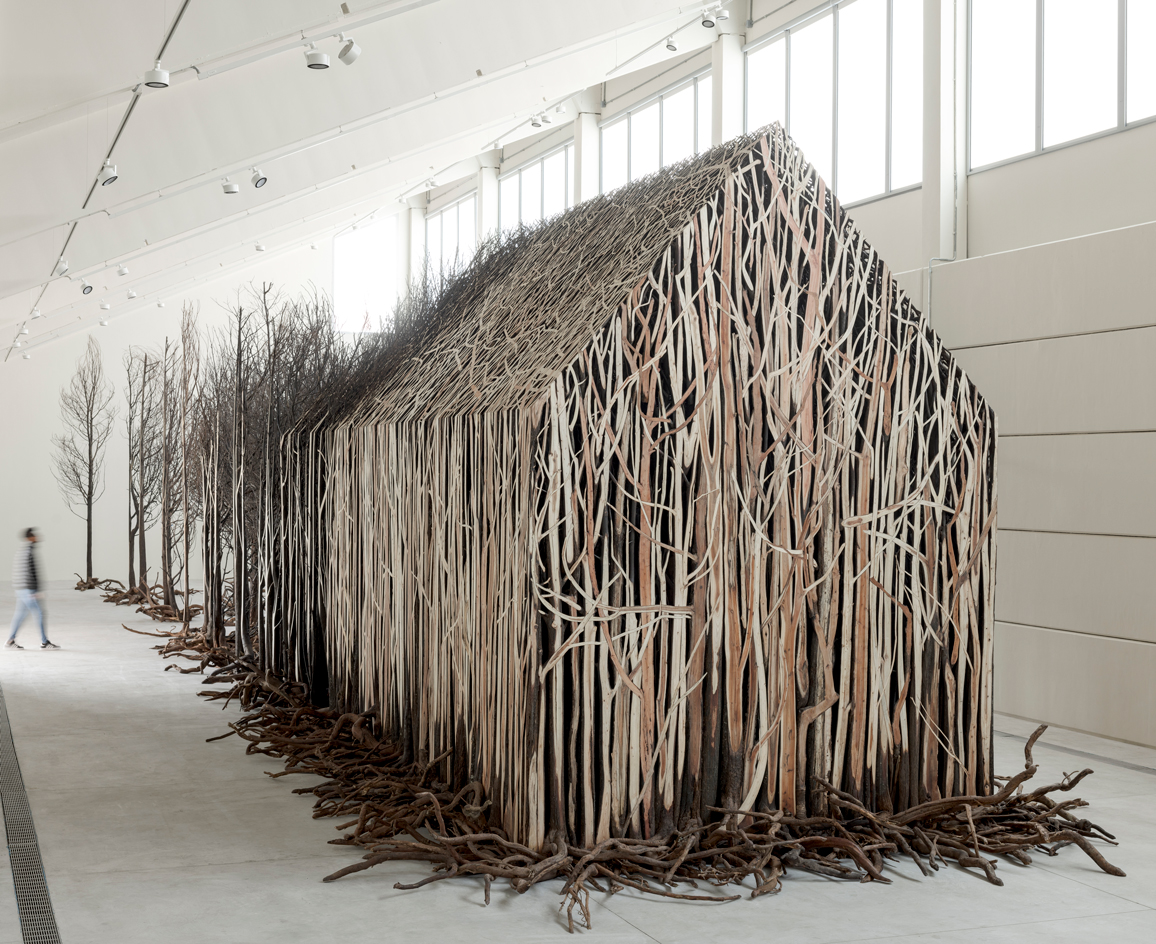
In 2018, one of the most influential curators of our times, Okwui Enwezor, agreed to curate the Sharjah Biennial 15. The following year, Enwezor sadly passed away, leaving Sheikha Hoor Al Qasimi with his blessing to curate in his stead.
‘Okwui had originally wanted to do a museum show combined with 30 new commissions, and he put together a list of key works from the “Postcolonial Constellation” [works of art selected by Enwezor to illustrate the geopolitics in the aftermath of mass colonialism in the last 400 years], so I took that as my starting point,’ Al Qasimi explained to Wallpaper*.
Enwezor’s legacy is a post-colonial, even a post-national, approach in which he brought together artists to express their ideas outside the framework of the Western art world. Sharjah Biennial 15 brings together the participating artists in celebration of Enwezor’s vision.
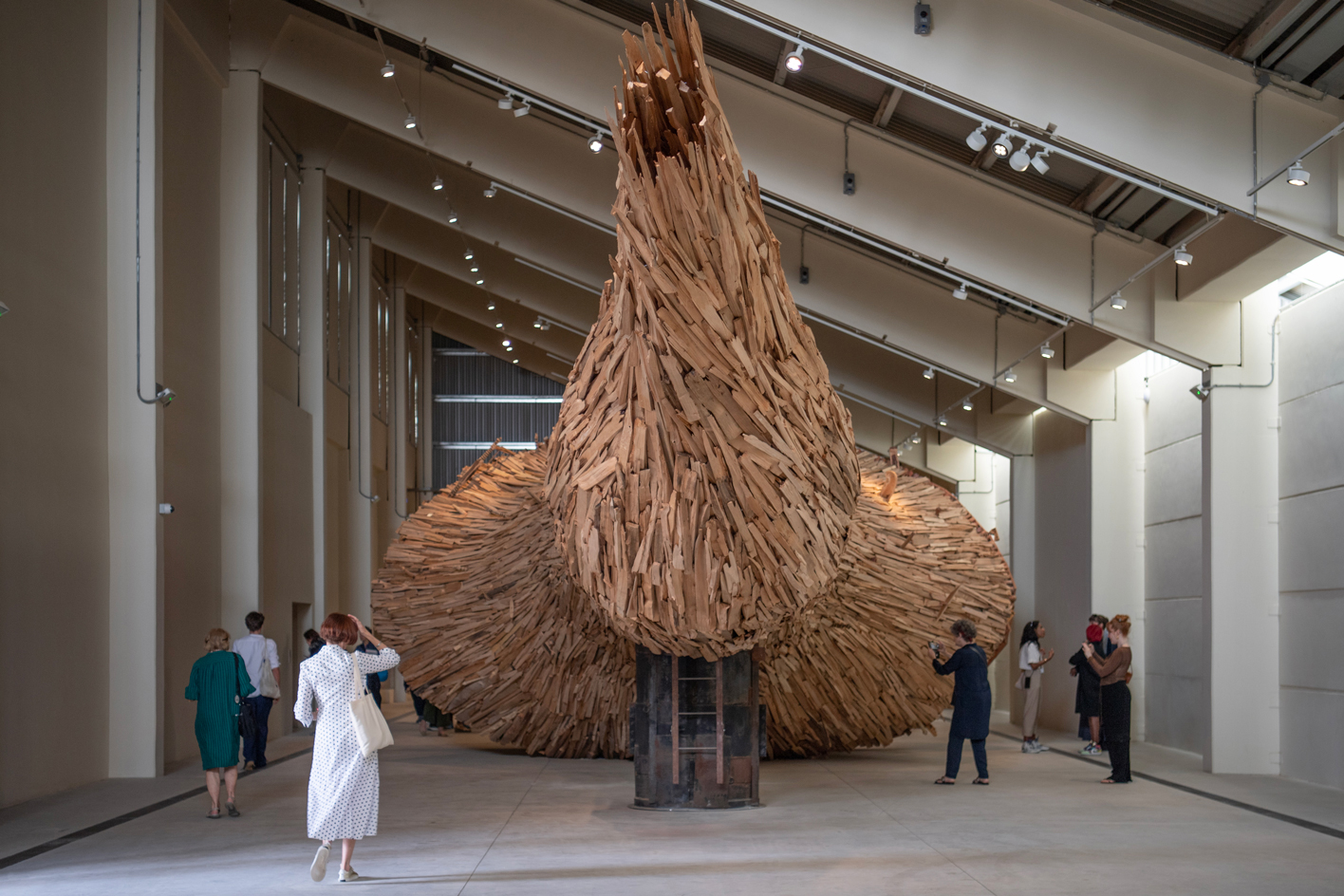
Nari Ward, Duty Colossus, 2022. Commissioned by MASS MoCA, North Adams, USA, and Sharjah Art Foundation
Al Qasimi has seized the curatorial baton following a global pandemic and within that, a social justice revolution. Postponing for two years also meant that this posthumous collaboration coincided with the 30-year anniversary of the biennial and Al Qasimi’s 20-year anniversary as director. The result, Sharjah Biennial 15: Thinking Historically in the Present, is a coming together of the art world’s Global South and its diaspora, with over 170 artists and more than 300 artworks in venues across Sharjah – a once-in-a-generation event whose impact will be felt for years to come.
Representing viewpoints from all corners of the globe, the biennial presents major works from heavyweights, while also platforming new voices. From architectural interventions referencing migrant workers’ rights to post-internet interpretations of journeys taken by refugees, the scope of this show is enormous.
The preservation of the historic architecture of Sharjah is a key remit of the Sharjah Art Foundation. Venues for the biennial combine the city’s old fruit market with new gallery spaces and cinemas across the region, including the newly completed Kalba Ice Factory site, which hosts stunning monumental sculptures, among them work by Doris Salcedo, who, alongside Bouchra Khalili and Hajra Waheed, was named winner of the Sharjah Biennial Prize.
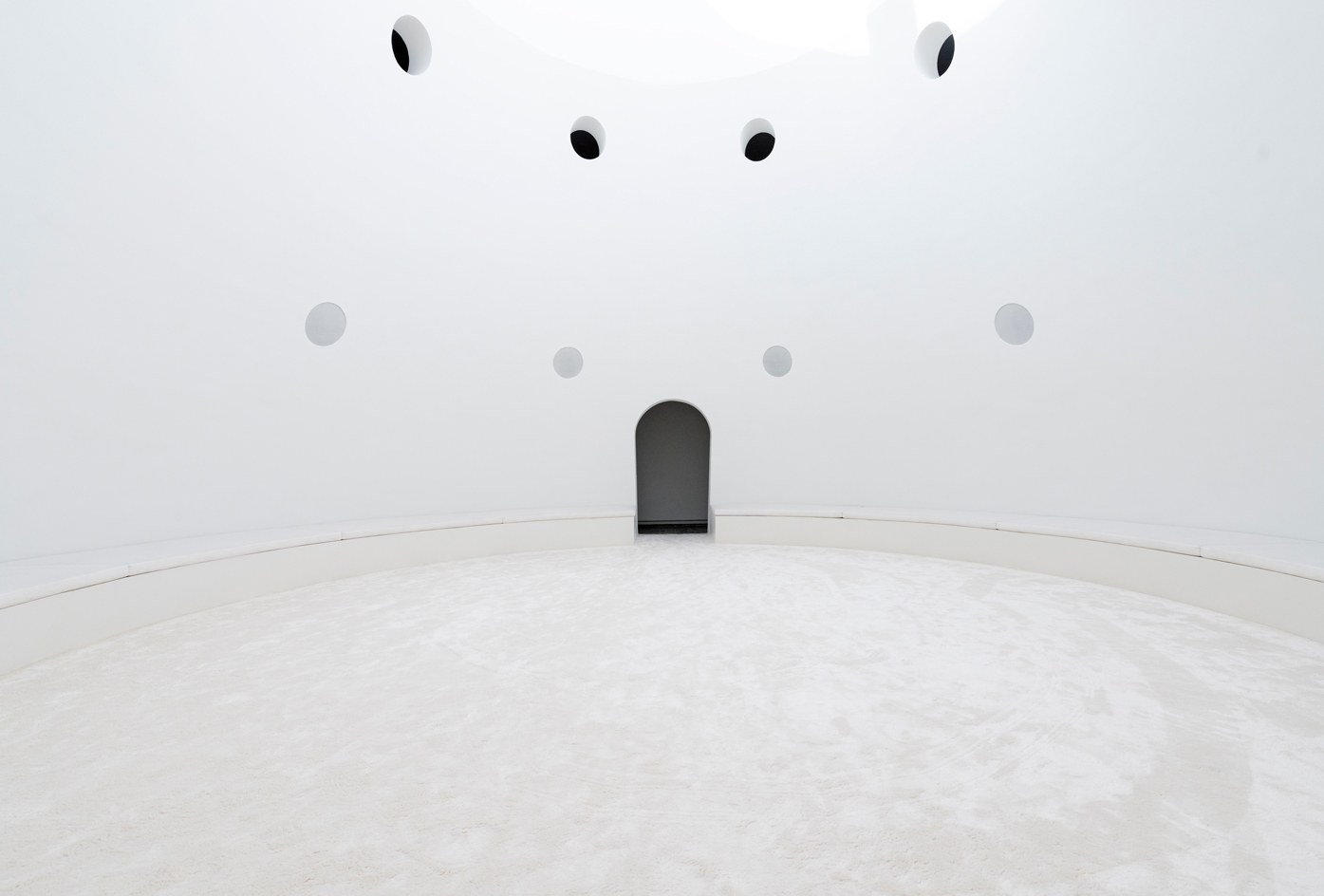
Hajra Waheed, Hum II, 2023. Commissioned by Sharjah Art Foundation; supported by Canada Council for the Arts, Ottawa. Installation view: Sharjah Biennial 15, Al Mureijah Art Spaces, 2023
The bumper list of 29 newly commissioned works includes a huge, site-specific installation by Ghanaian artist Ibrahim Mahama, a film and VR experience by Cao Fei, a feature-length film by Coco Fusco, and installations by emerging artists Mandla, and Hajra Waheed.
Receive our daily digest of inspiration, escapism and design stories from around the world direct to your inbox.
Also of note were some striking pieces by John Akomfrah, who will represent Britain at the Venice Biennale 2024. The artist, writer and filmmaker debuted his newly commissioned five-channel film work Arcadia, 2023, which dispels ideas of nationalism through history, climate, nature and the passing of time in a monumental installation fitting for such a subject. Here, we see the human, the animal and the fabric of our ecosystem narrated through symbolic tableaux and expansive images of the Earth from space.
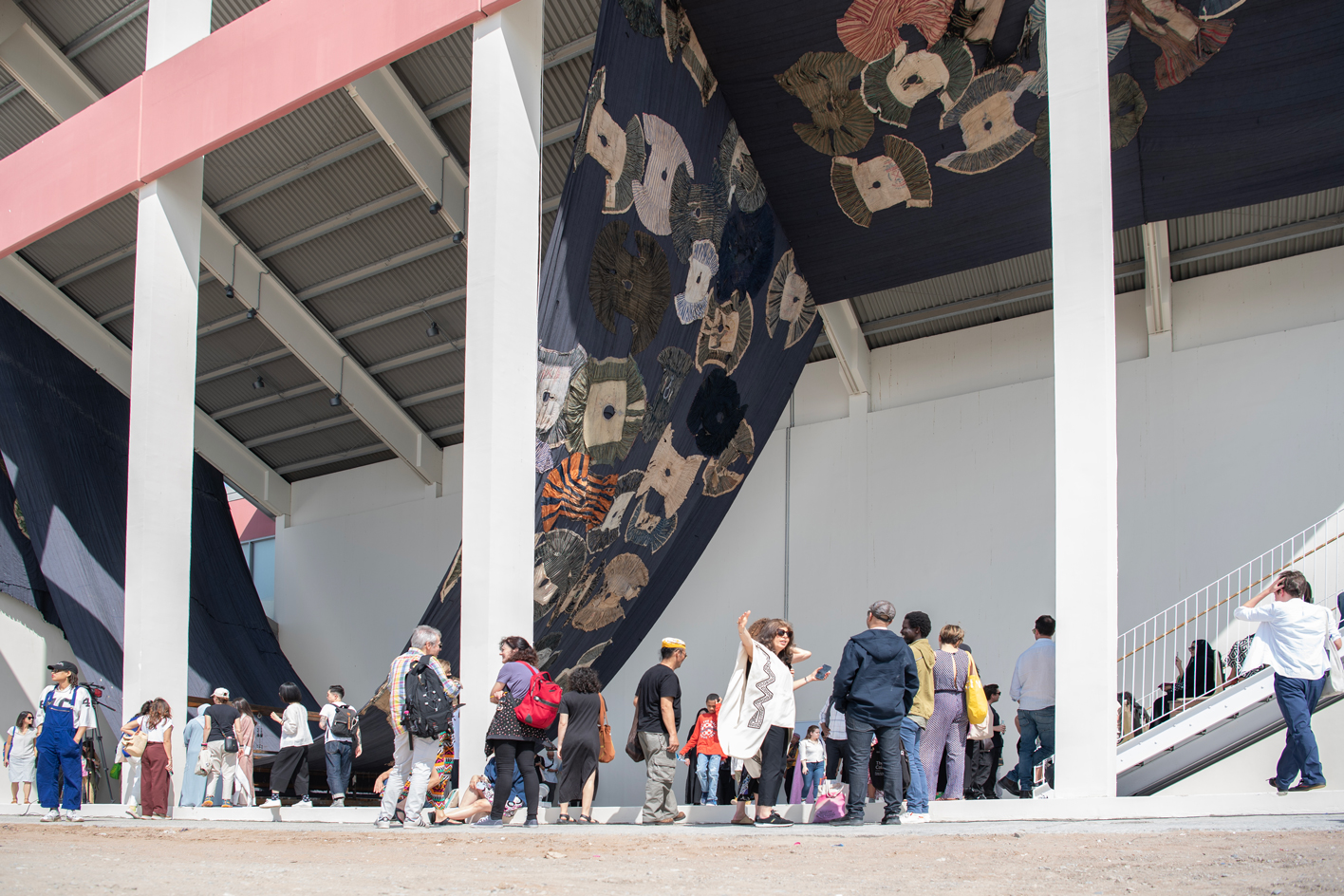
Ibrahim Mahama, A Tale of Time/ Purple Republic, 2023. Installation view: Sharjah Biennial 15, Kalba Ice Factory, 2023. Commissioned by Sharjah Art Foundation
Isaac Julien’s Once Again (Statues Never Die), 2022, addresses issues of collecting through the lens of Black, queer art historian Alain Locke, born in 1885, and his interaction with Albert C Barnes’ collection of African art. Drawing enormous queues at the biennial opening, the piece highlights Julien’s unique eye for beauty and his ability to distil complexity.
Taking on the mantle of Enwezor’s ideas, artists tackle rights, identity, history, displacement and building a life in the face of adversity using a variety of methods and voices across the 19 biennial venues. The Living and the Dead Ensemble, a multidisciplinary collective from Haiti, present The Wake, 2021, at The Africa Institute. The three-channel video work uses poetry, movement and video-editing inspired by a night of earthquakes, protest and rebirth in which marginalised communities are summoned to unite.
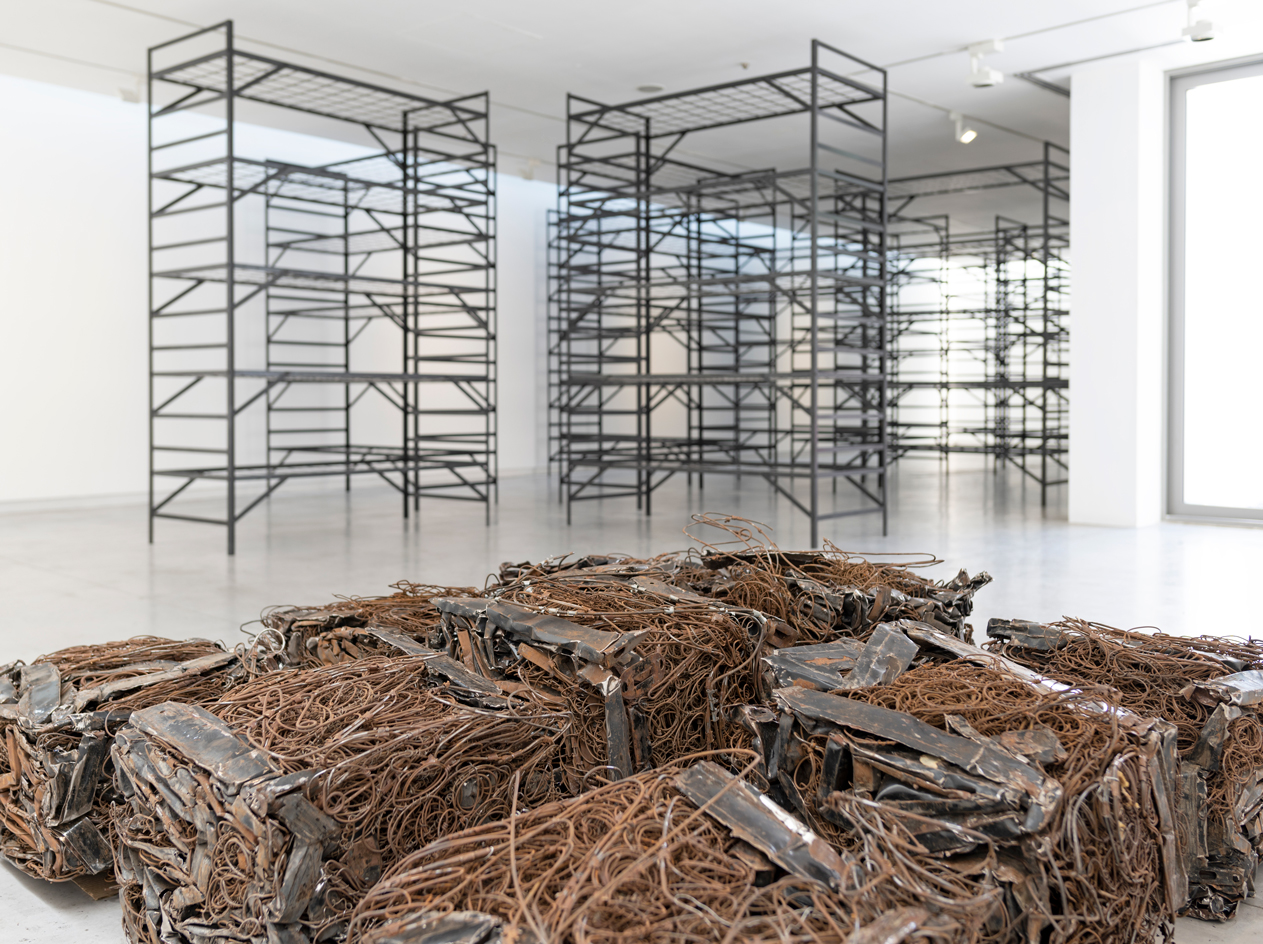
Mona Hatoum, Quarters, 2017. Installation view: Sharjah Biennial 15, Al Mureijah Art Spaces, Sharjah, 2023
‘In the cosmogony of the Black Caribbean, inherited from the world of the plantation where a day is a long succession of constraints, forced labour and violence, the night is a space to catch one's breath,’ reads a statement from the ensemble. ‘A place for the re-composition of forces for a community of exhausted bodies, a place for reparations, cultural reinvention, of preparation for combats to come.’
Revolutionary Enclosures (Until the Apricots), a multi-faceted new collaborative work by artist and architect Dima Srouji and philosopher Jasbir Puar, addressed these themes through memories of the 2000 Second Intifada uprising in Palestine recalled by many experiencing the Covid-19 lockdown of 2020. Speaking to her contemporaries, Srouji realised that the experience of Covid lockdown brought back repressed memories of their experiences in 2000. The five-part installation includes personal letters, brass bus tickets to evoke the end of periodic lockdowns and wallpaper decorated with exploded bullets that, at a glance, look like flowers.
Though unwieldy at times, the Sharjah Biennial 15 is a remarkable and ambitious framing of creativity beyond the framework of the Western art world.
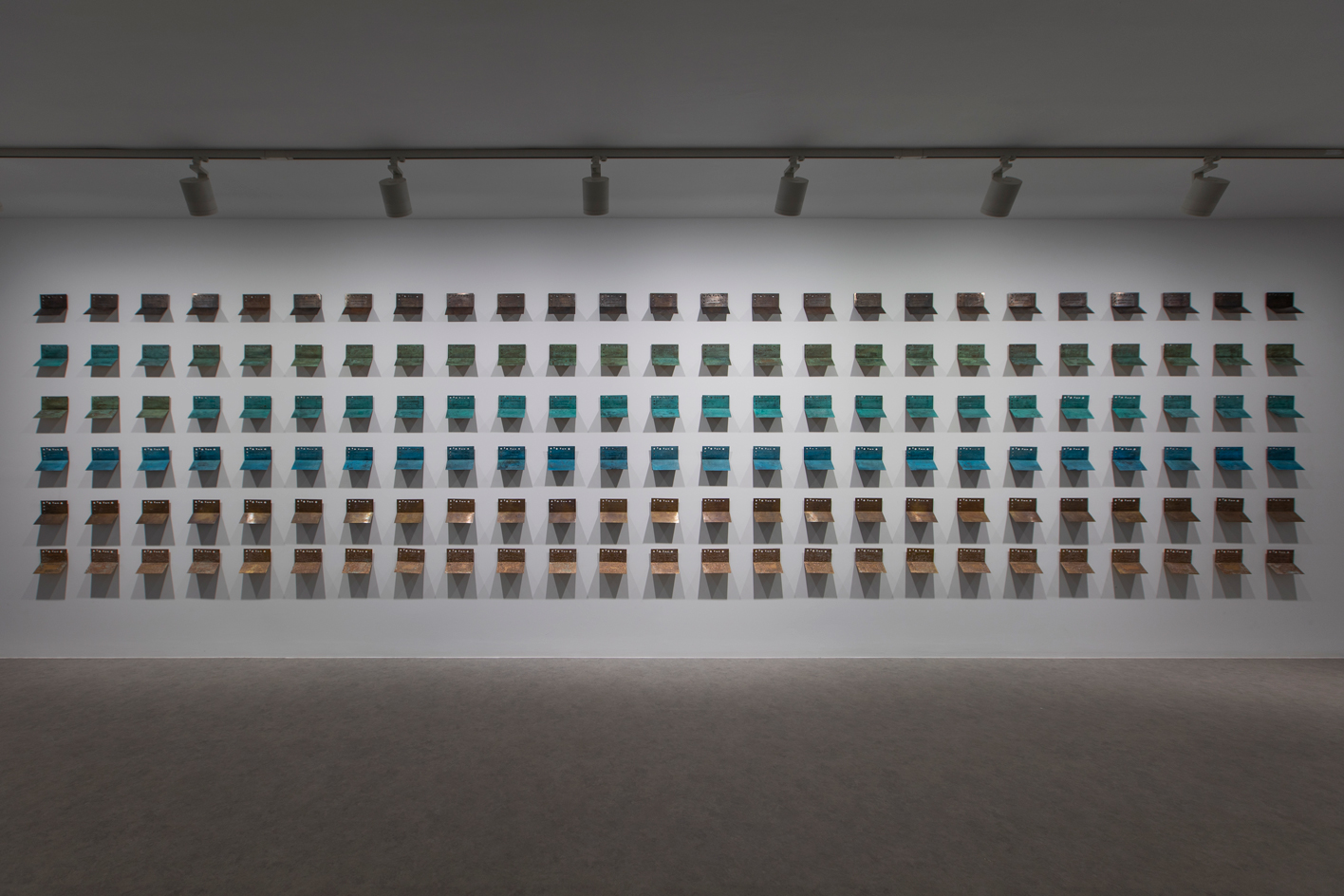
'Sharjah Biennial 15: Thinking Historically in the Present' runs until 11 June 2023. sharjahart.org
Amah-Rose Abrams is a British writer, editor and broadcaster covering arts and culture based in London. In her decade plus career she has covered and broken arts stories all over the world and has interviewed artists including Marina Abramovic, Nan Goldin, Ai Weiwei, Lubaina Himid and Herzog & de Meuron. She has also worked in content strategy and production.
-
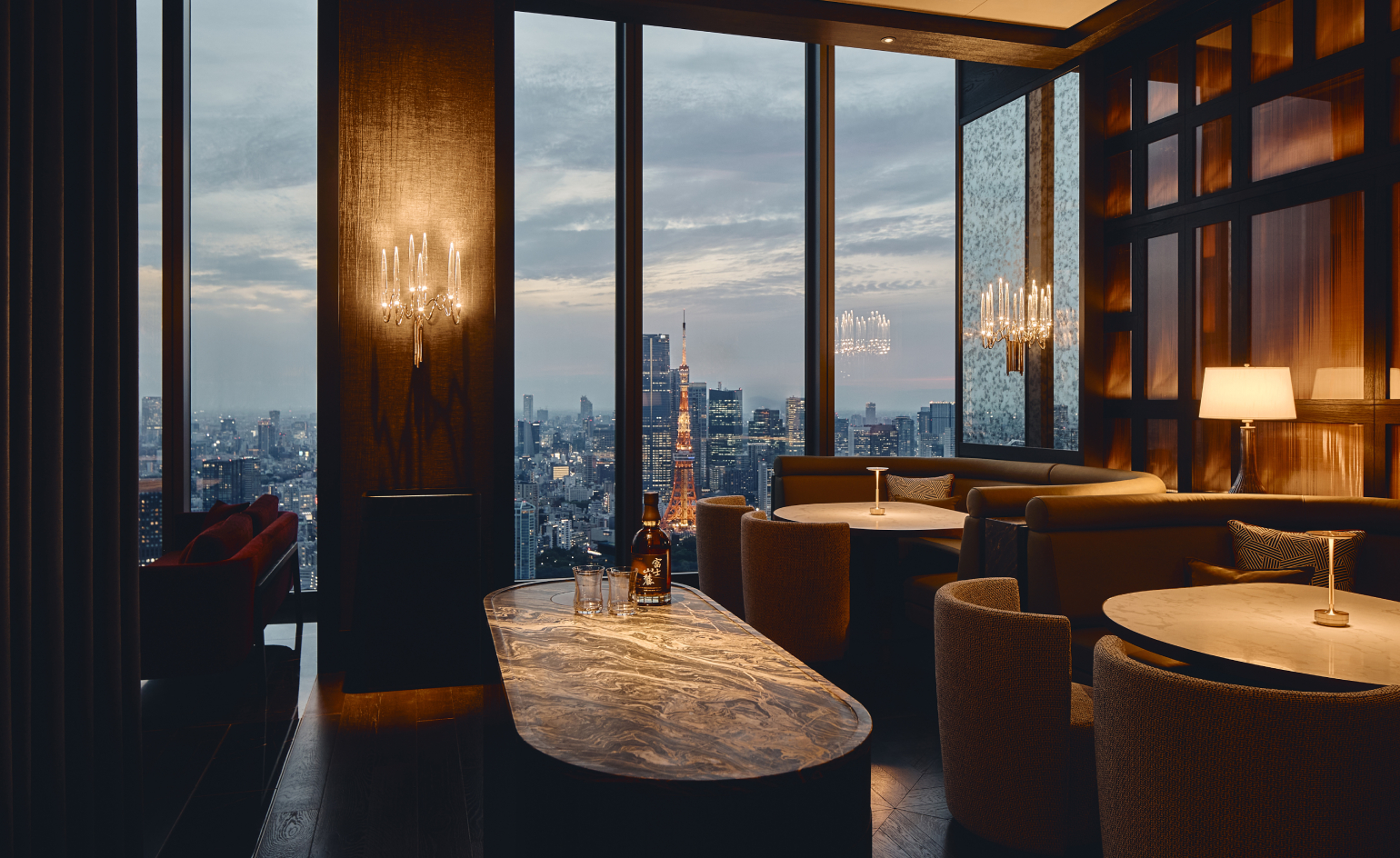 Is this Tokyo’s most alluring new hotel?
Is this Tokyo’s most alluring new hotel?In the world’s busiest capital, a new benchmark for serenity emerges 35 floors above ground. We checked into the Fairmont Tokyo
-
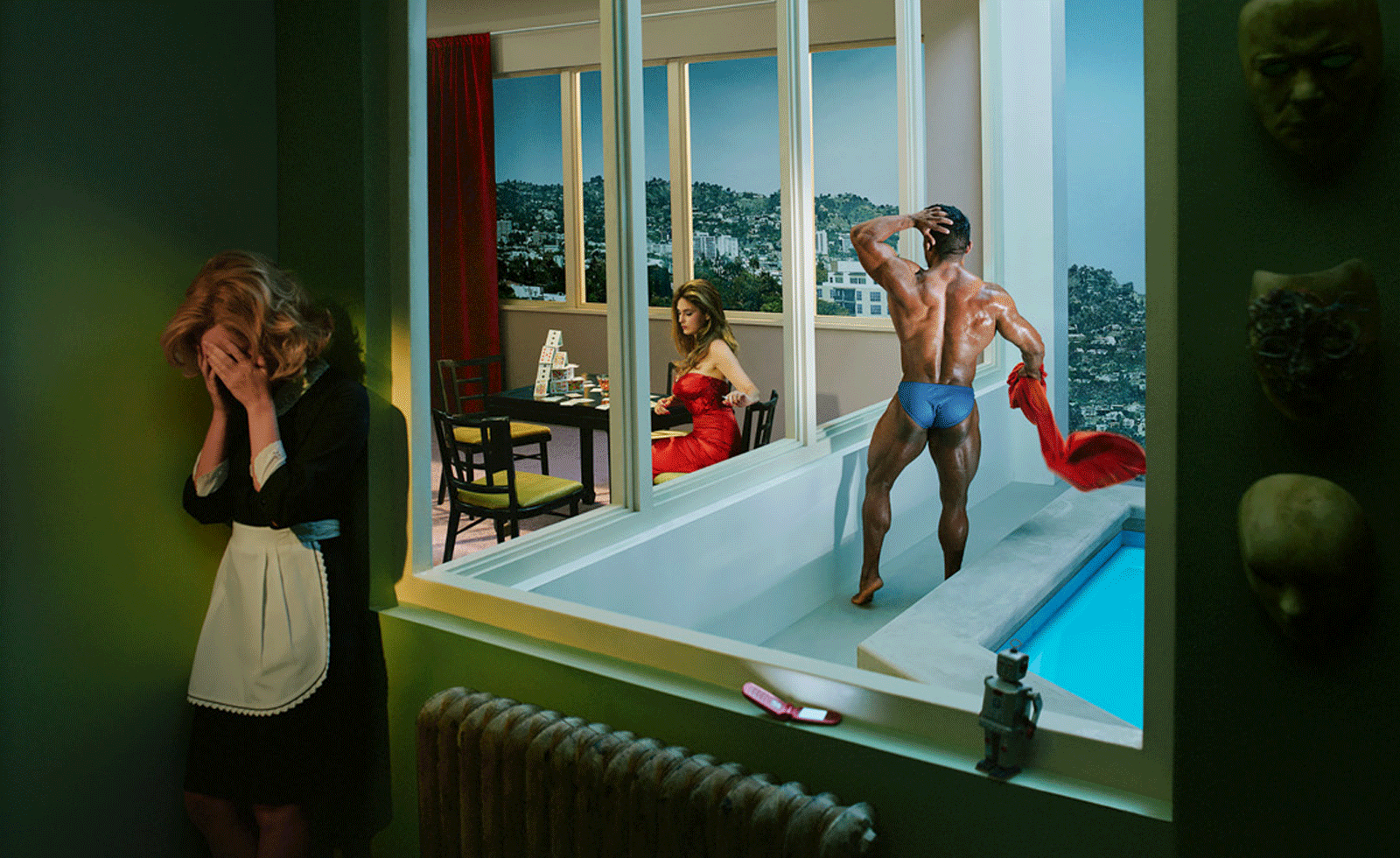 What to see at Art Basel Miami Beach 2025 – nine brilliant booths
What to see at Art Basel Miami Beach 2025 – nine brilliant boothsThe buzzy Miami art fair (5-7 December) will bring together more than 280 leading international galleries and a packed week of pop-ups and parties – start with these must-see booths
-
 An elegant Argentine restomod keeps the spirit of the sporting 1930s alive
An elegant Argentine restomod keeps the spirit of the sporting 1930s aliveThe SP40 Restomod by Iconic Auto Sports is an update of a classic 1930s custom job, enhanced for the modern era
-
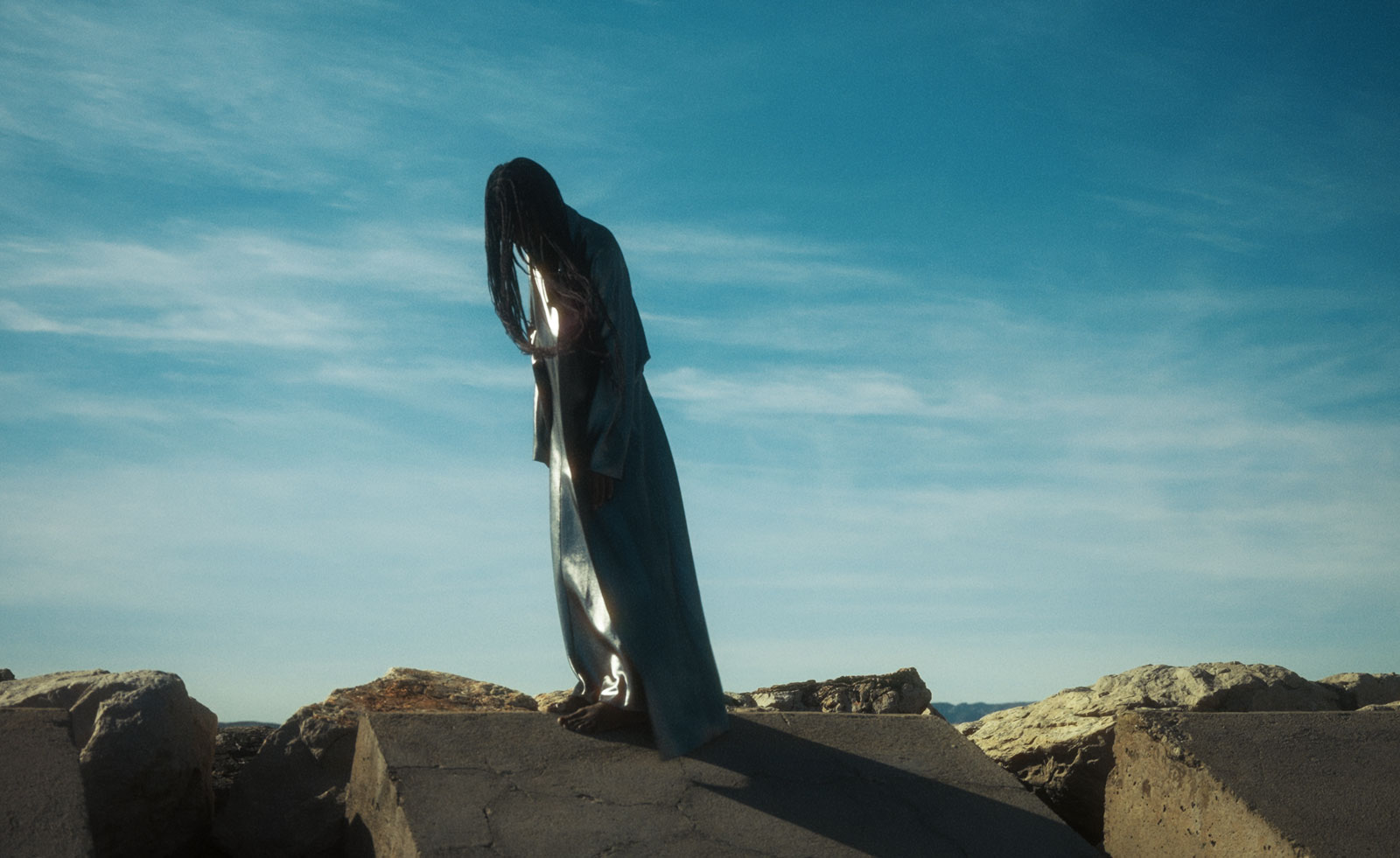 ‘Artists are being asked to be vulnerable’: inside the Sharjah Biennial 2025
‘Artists are being asked to be vulnerable’: inside the Sharjah Biennial 2025In the UAE, the 16th Sharjah Biennial, titled ‘To Carry’, seeks to give voices to an international range of artists
-
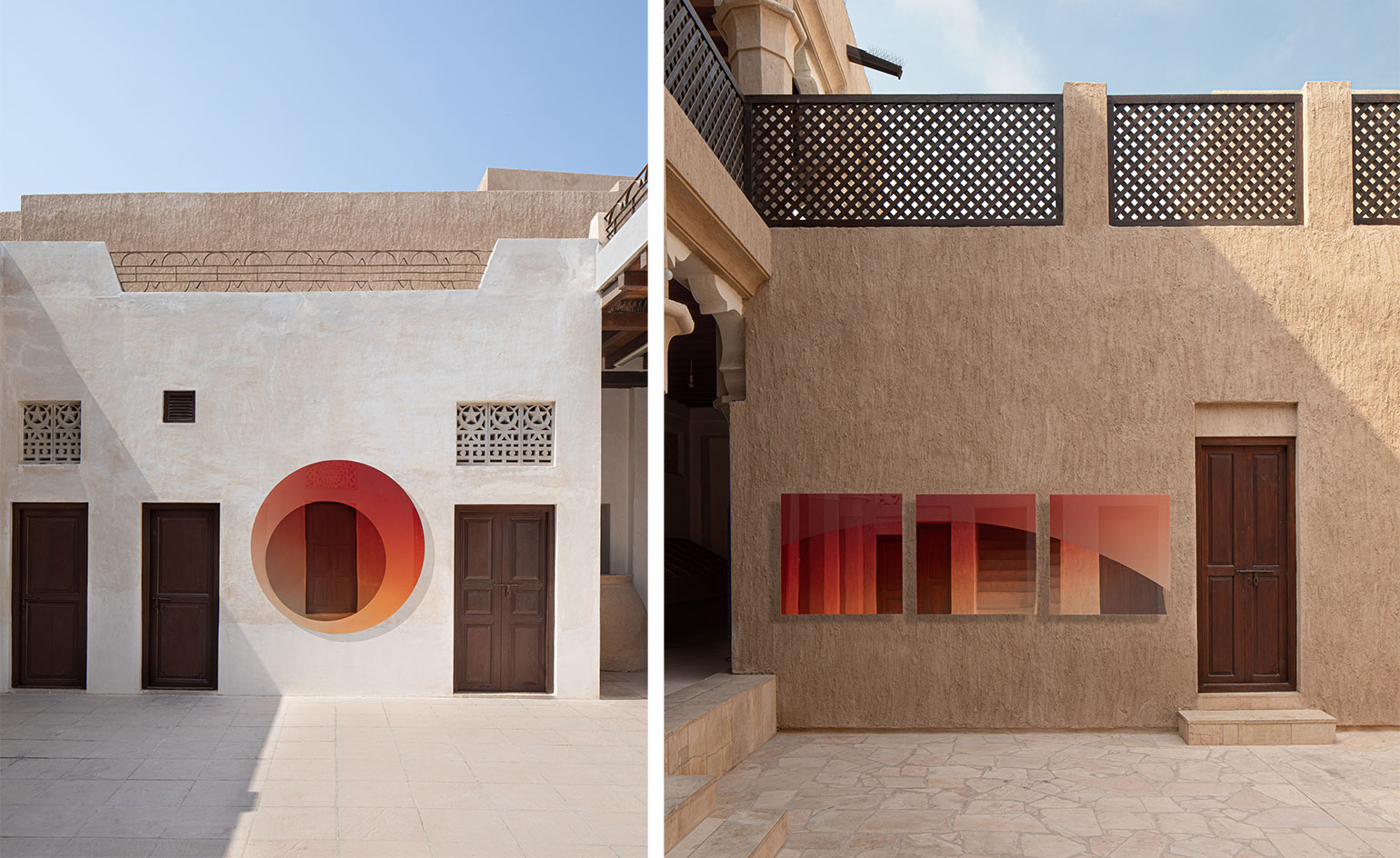 Gallery Collectional launches during Dubai Design Week
Gallery Collectional launches during Dubai Design WeekThe new gallery in Dubai’s Eden House opens with inaugural exhibition ‘The Shape of Things to Come’ and unveils new mirrors by Sabine Marcelis
-
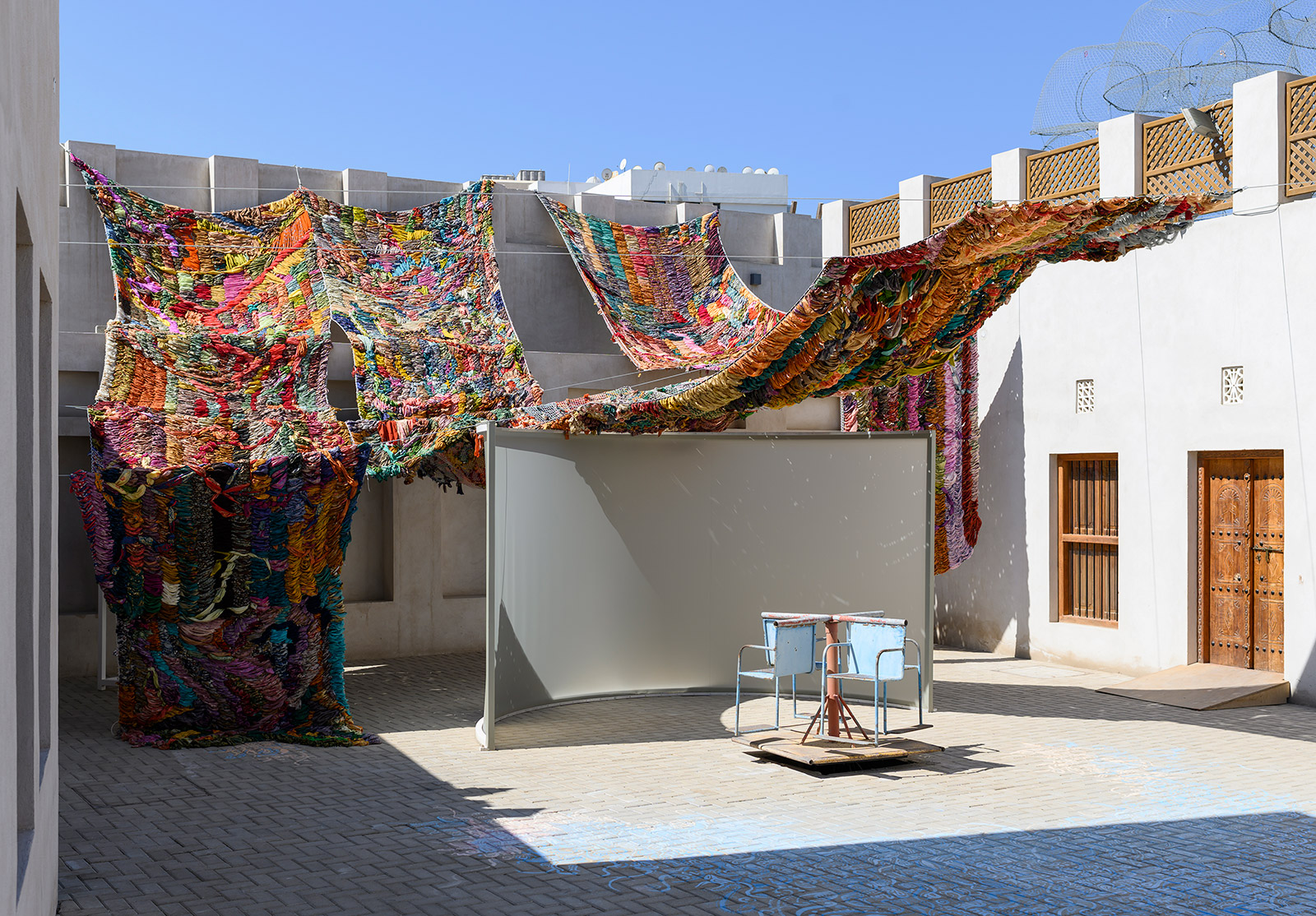 Sharjah Biennial 14 is raising the emirate’s cultural cachet
Sharjah Biennial 14 is raising the emirate’s cultural cachetThemed ‘Leaving the Echo Chamber’, the 14th edition of the Sharjah Art Foundation-driven initiative presents over 60 major new commissions
-
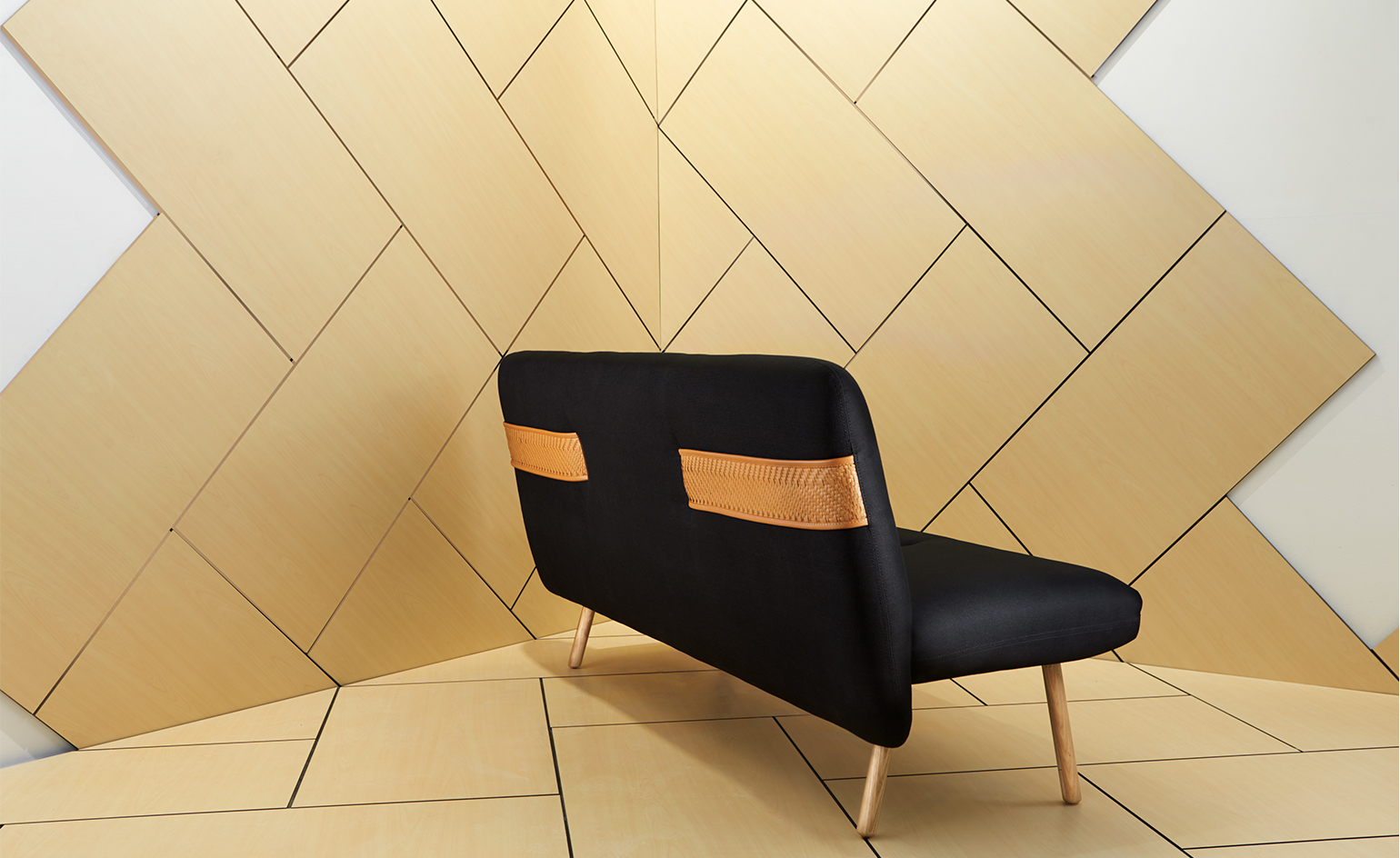 Unearthing the cultural stories and emotional forces behind Emirati design
Unearthing the cultural stories and emotional forces behind Emirati design -
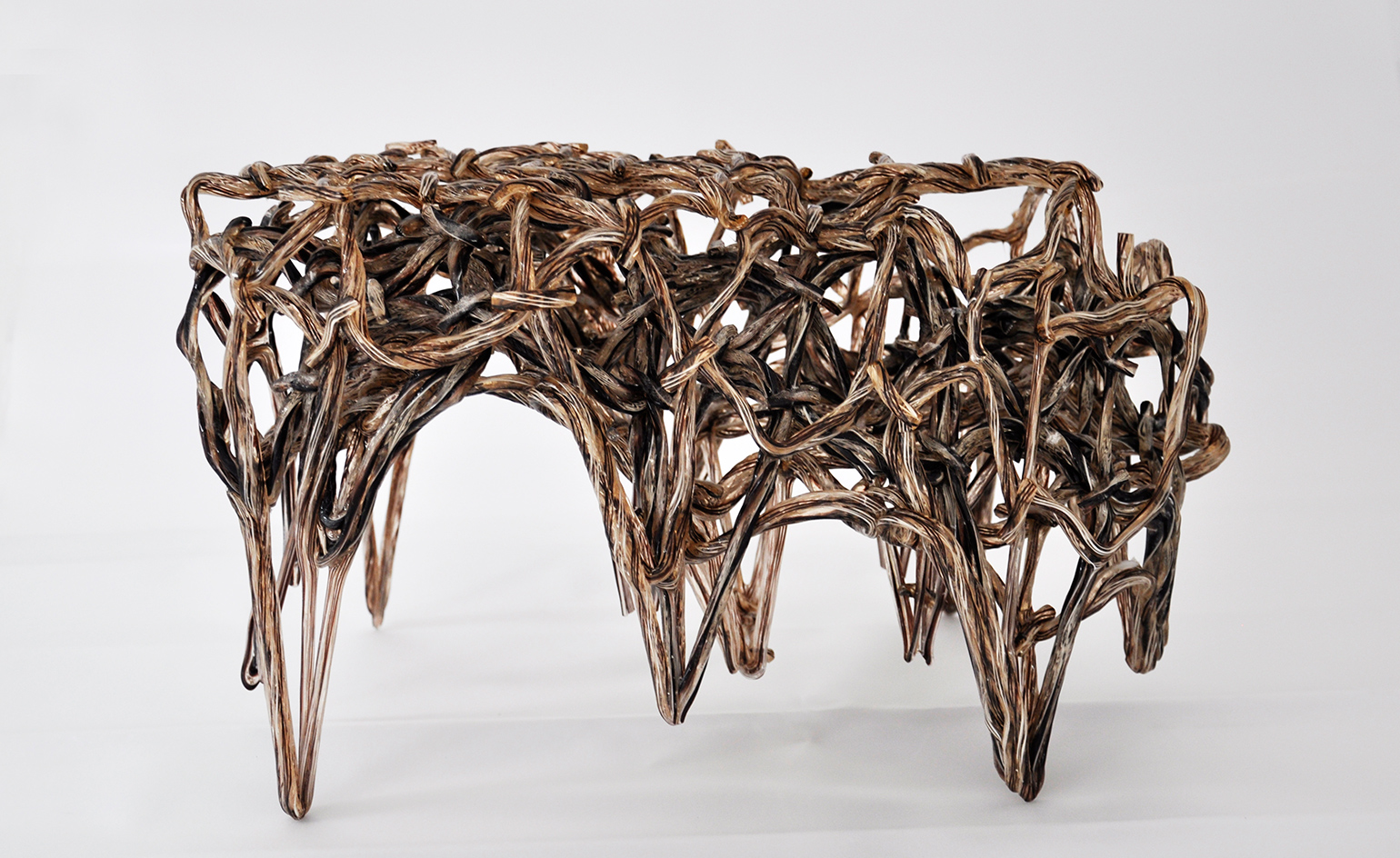 Middle East revealed: W* explores Dubai's growing design scene
Middle East revealed: W* explores Dubai's growing design scene -
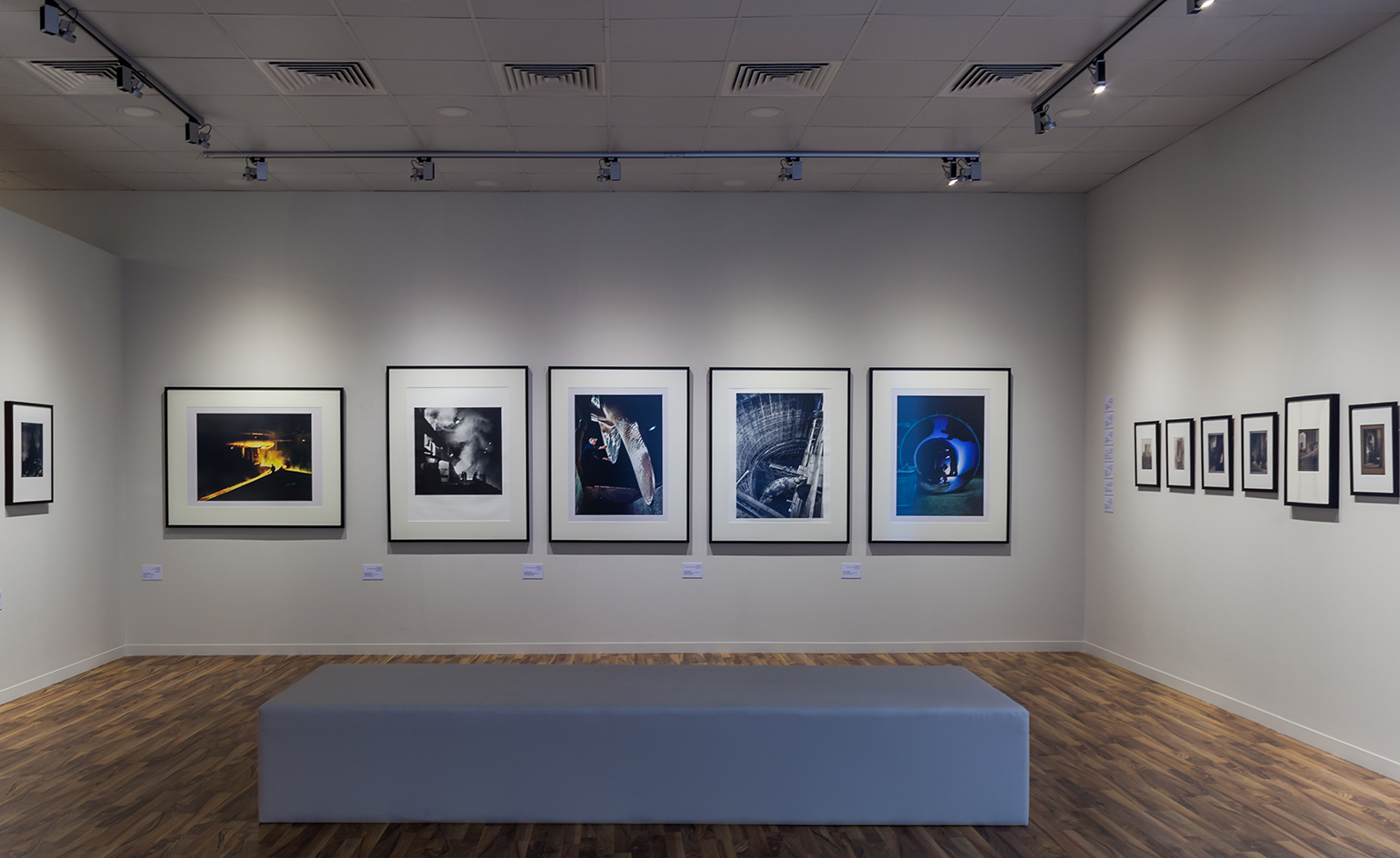 Photo finish: Dubai hosts inaugural photography exhibition
Photo finish: Dubai hosts inaugural photography exhibition -
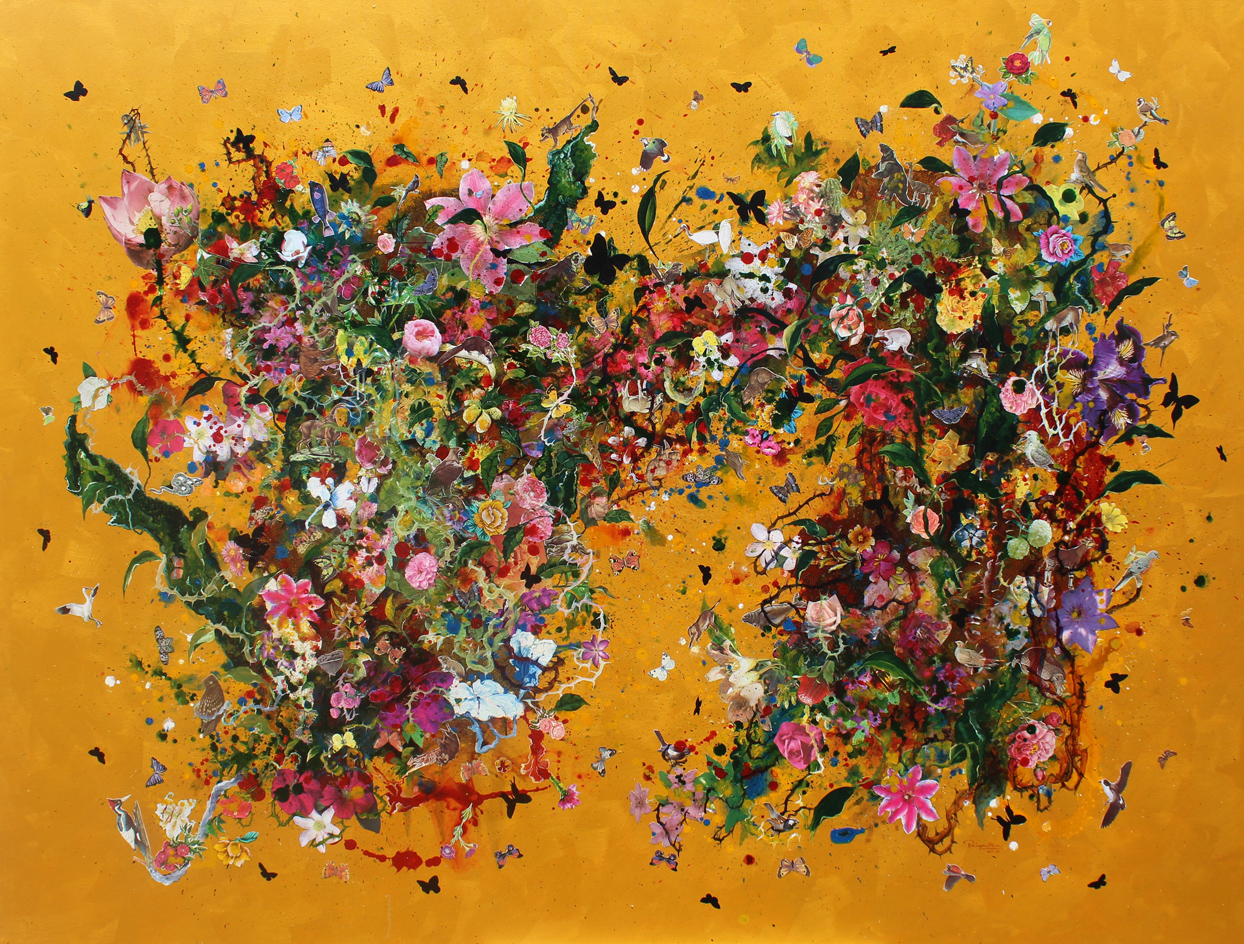 The future was: Wallpaper* explores Art Dubai 2016
The future was: Wallpaper* explores Art Dubai 2016 -
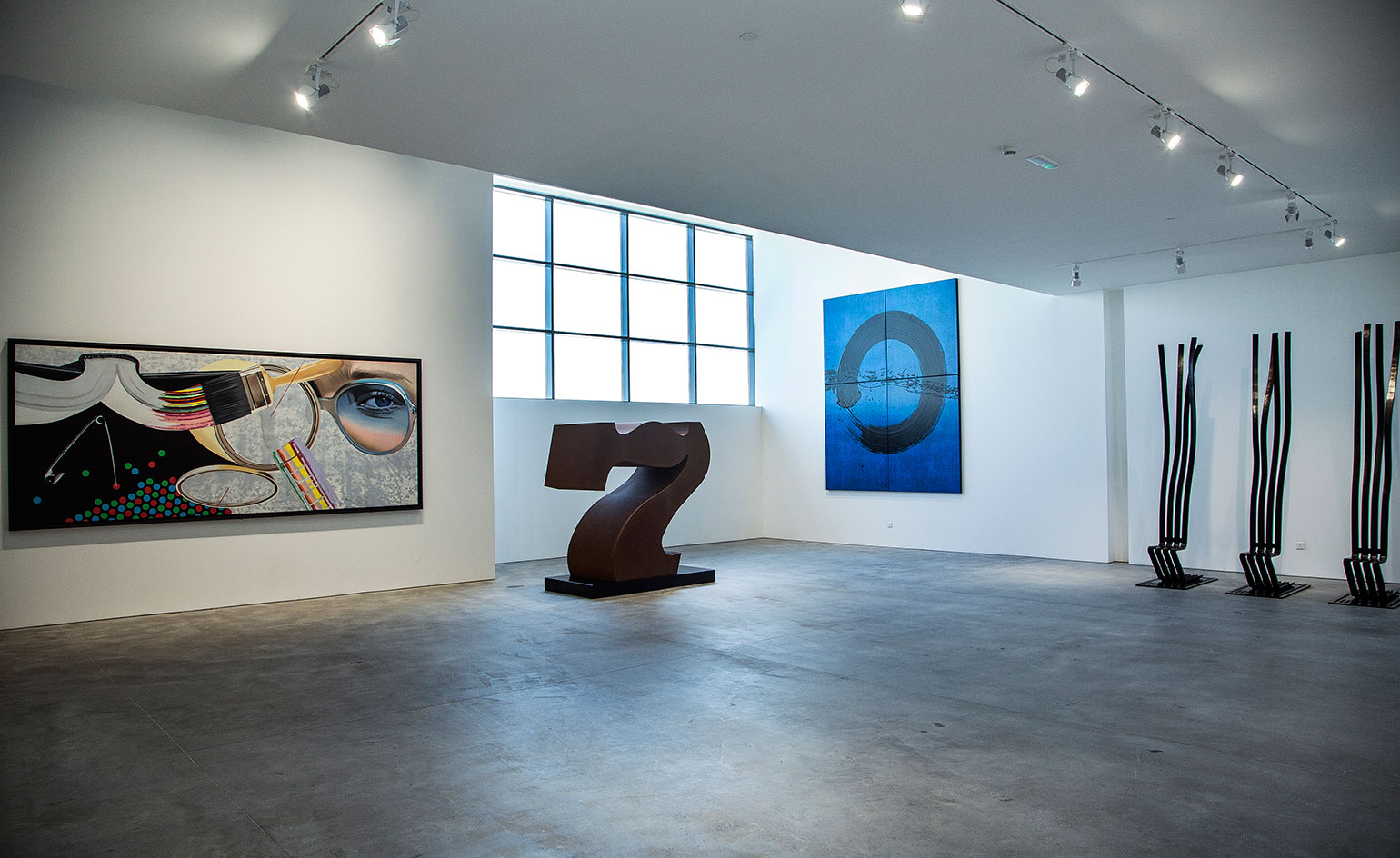 A new conversation: Stéphane Custot on Dubai's emerging art markets
A new conversation: Stéphane Custot on Dubai's emerging art markets